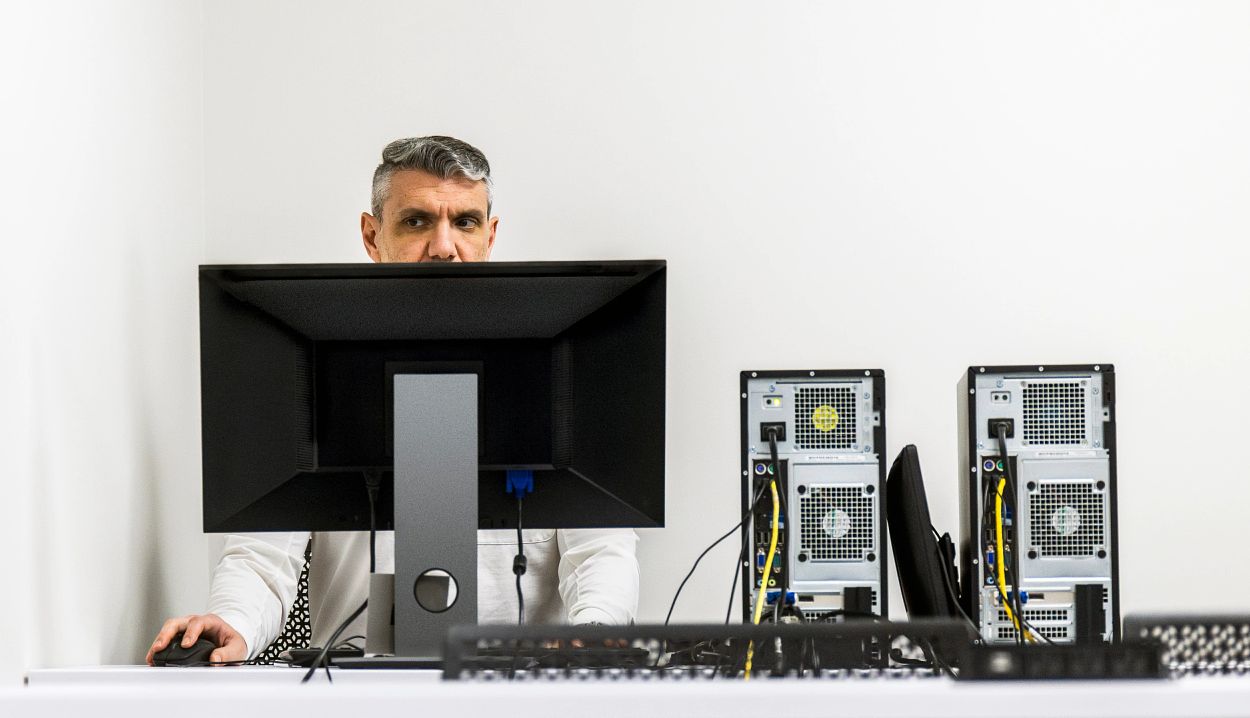
- Select a language for the TTS:
- UK English Female
- UK English Male
- US English Female
- US English Male
- Australian Female
- Australian Male
- Language selected: (auto detect) - EN
Play all audios:
The entrepreneur advertises his business online by way of rapping. “I got the key right here, I got the time right there,” he sings. “Everywhere, everywhere, everywhere, everywhere.” The
services he’s selling? Stealing checks, credit cards and personal information from U.S. Postal Service mailboxes using a stolen “arrow key” of the type used by postal workers to access
locked mailboxes. Elsewhere, in an encrypted social media chat group, a criminal posts screenshots of a hacked Bank of America checking account that’s up for sale. The account balance:
$3,884. The owner’s full name, bank account number, phone number, address and access to her payment app are part of the deal — all for $3. Welcome to the dark web. These are just a few of
the scenes observed on a recent day by criminologist David Maimon as he tapped out a few keystrokes on his laptop and slipped into this hidden criminal world. “This ecosystem is exploding,”
says Maimon, whose Evidence-Based Cybersecurity Research Group at Georgia State University in Atlanta spies on criminals who steal billions of dollars a year. “We’re talking about enormous
networks and organized criminal groups with sophisticated operations.” A LOOK INSIDE THE DARK WEB In the nefarious corners of the internet, criminals talk to each other with complete
anonymity. Maimon’s cybersleuths see it all — from stacks of stolen, washed and forged checks to pilfered driver’s licenses and purloined health insurance cards sold from one scammer to
another. The personal identification information is often more valuable than the cash they can steal, Maimon says. “They can open new bank accounts, get fake driver’s licenses, buy guns.
The stolen identity opens the door to any kind of financial activity,” he says. The dark web is a group of hidden sites that can be accessed only with a special web browser that keeps users’
identities anonymous. You can’t get there via a Google search, for instance. Users can’t be traced, making the dark web attractive for criminals selling their stolen goods and illegal
services. Maimon and his group have watched romance scammers using smartphone technology to alter their faces as they woo unsuspecting victims, observed criminals luring newcomers into the
business with videos of thick wads of cash, and viewed homemade videos of scammers boasting about their successes. In one mysterious video the team found last fall, a man in a black and
silver mask assures his clients he’ll be back “in business” soon. That business, Maimon says, mainly involves defrauding banks.








